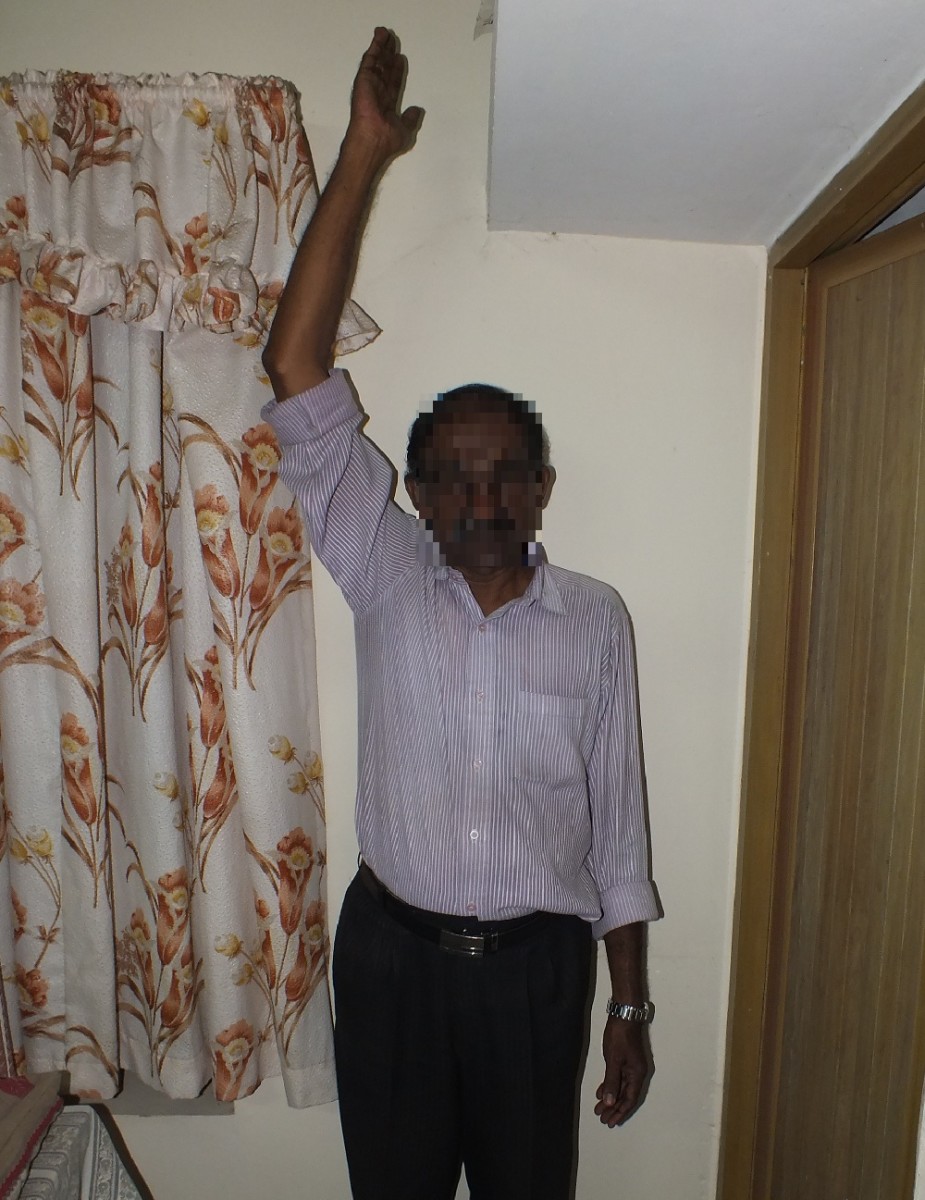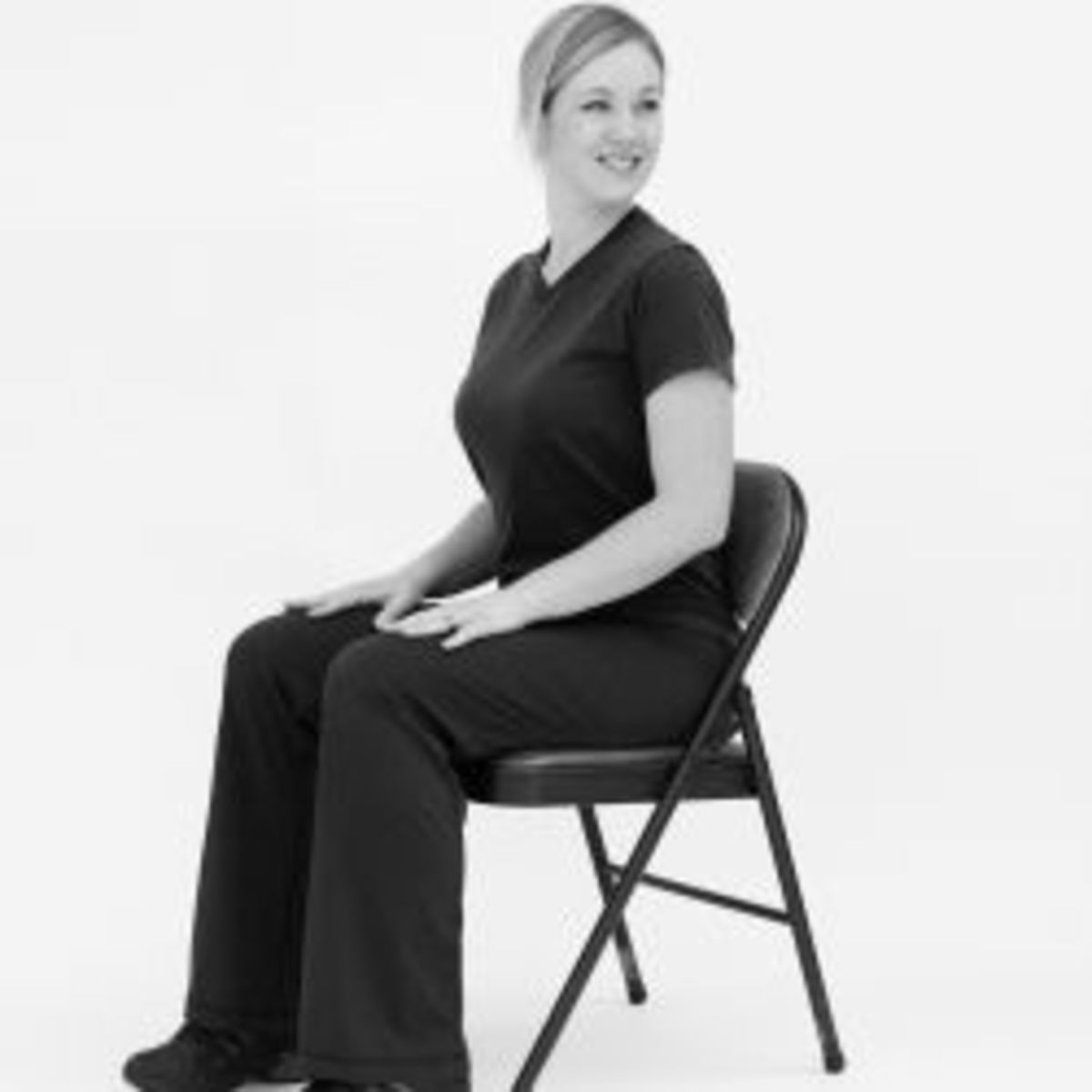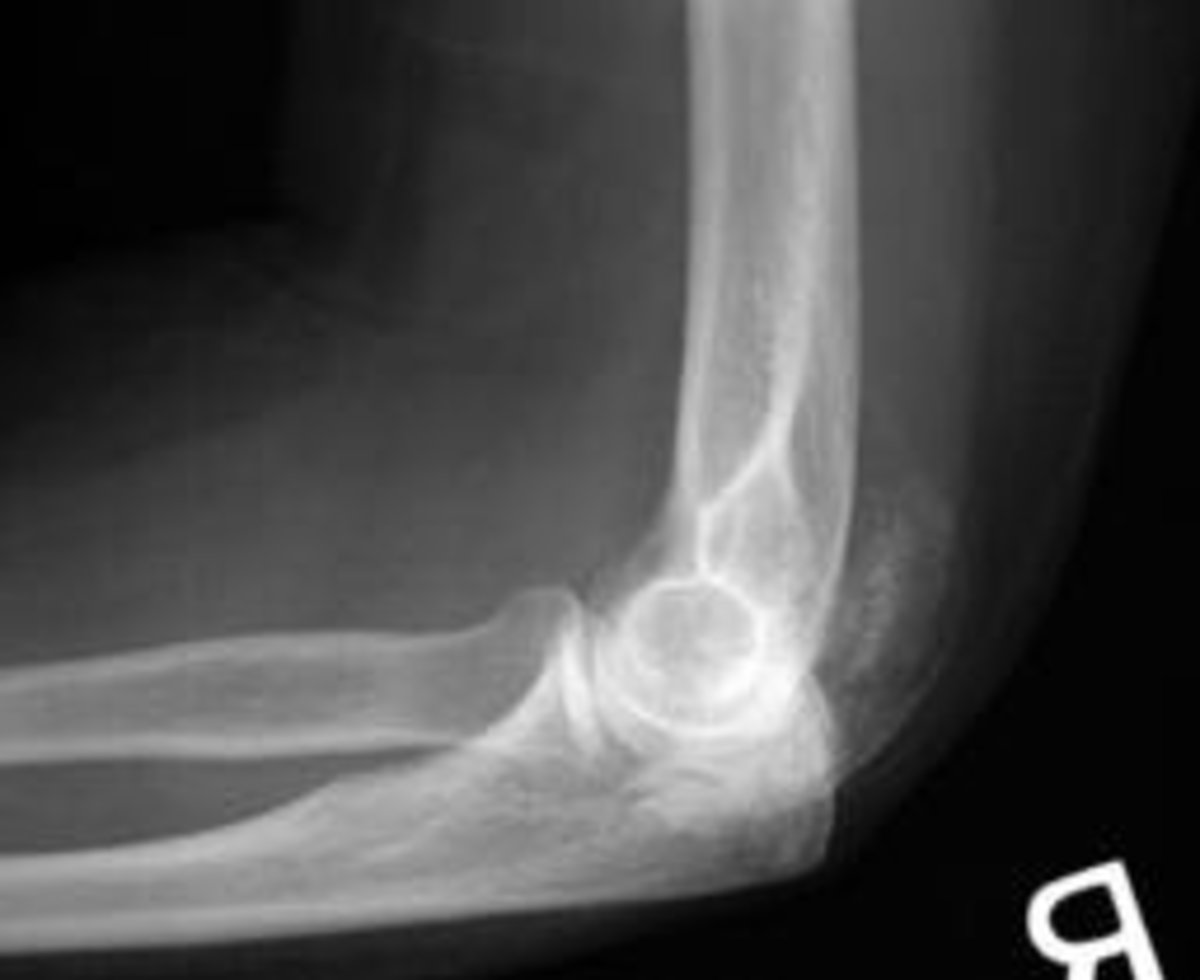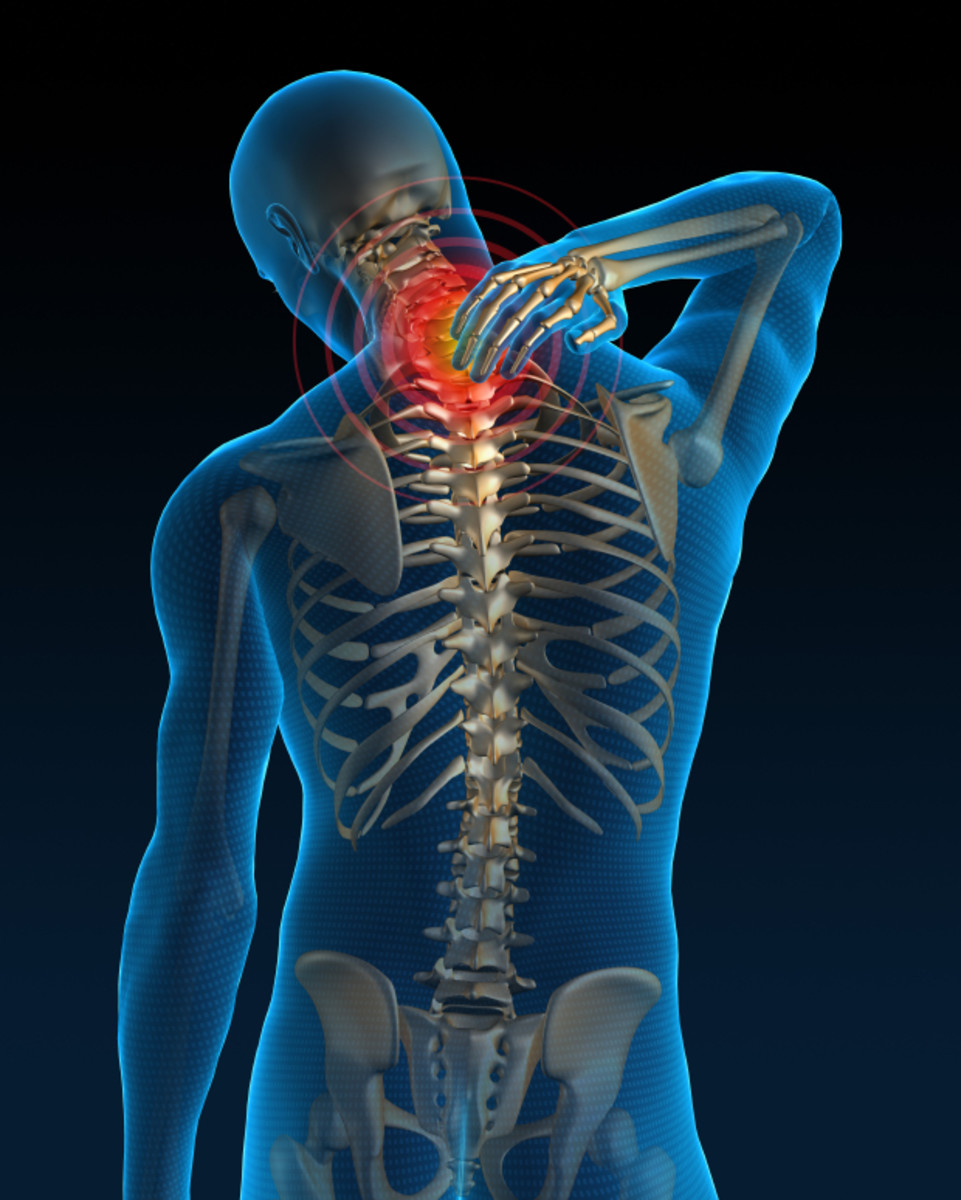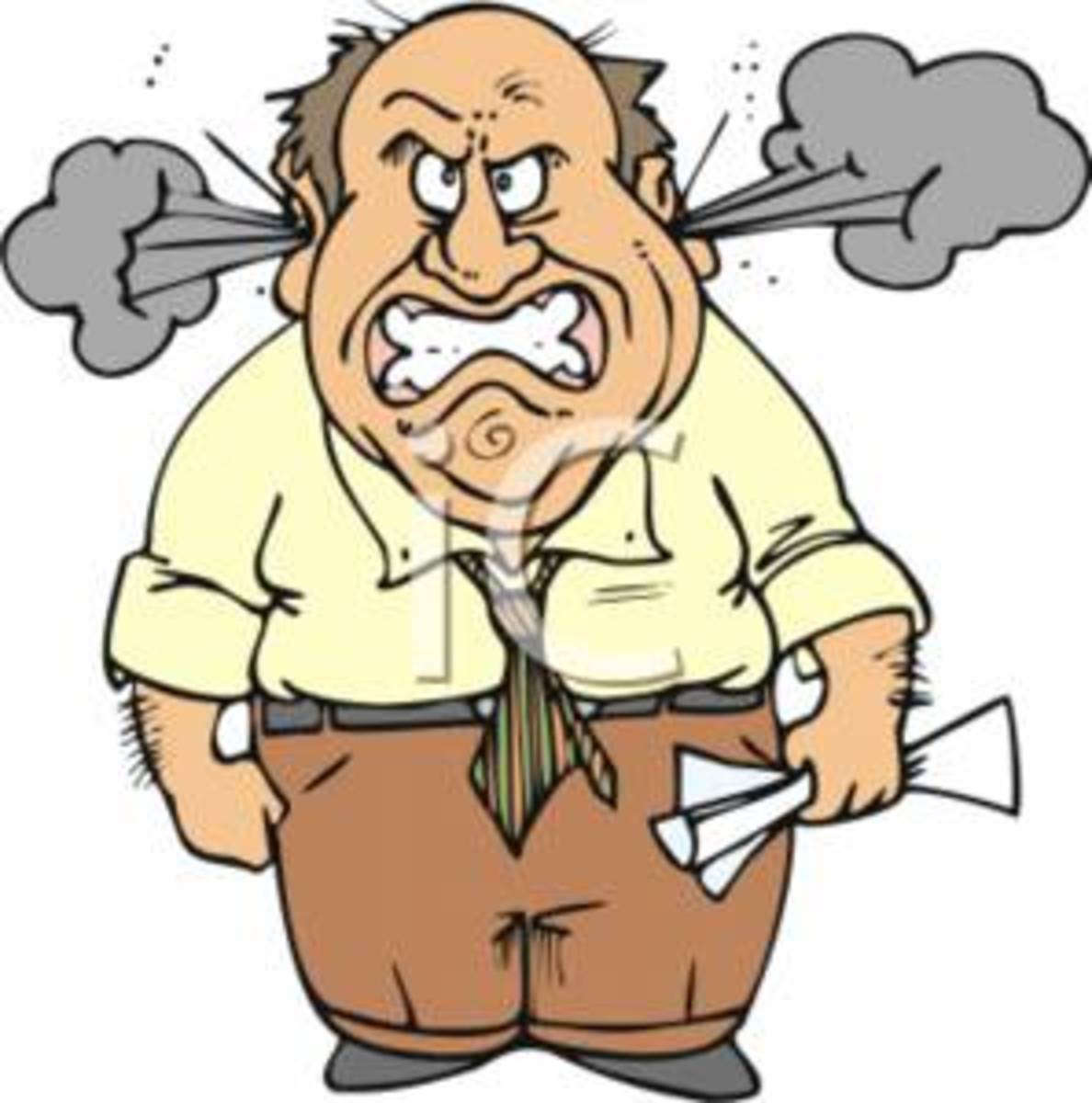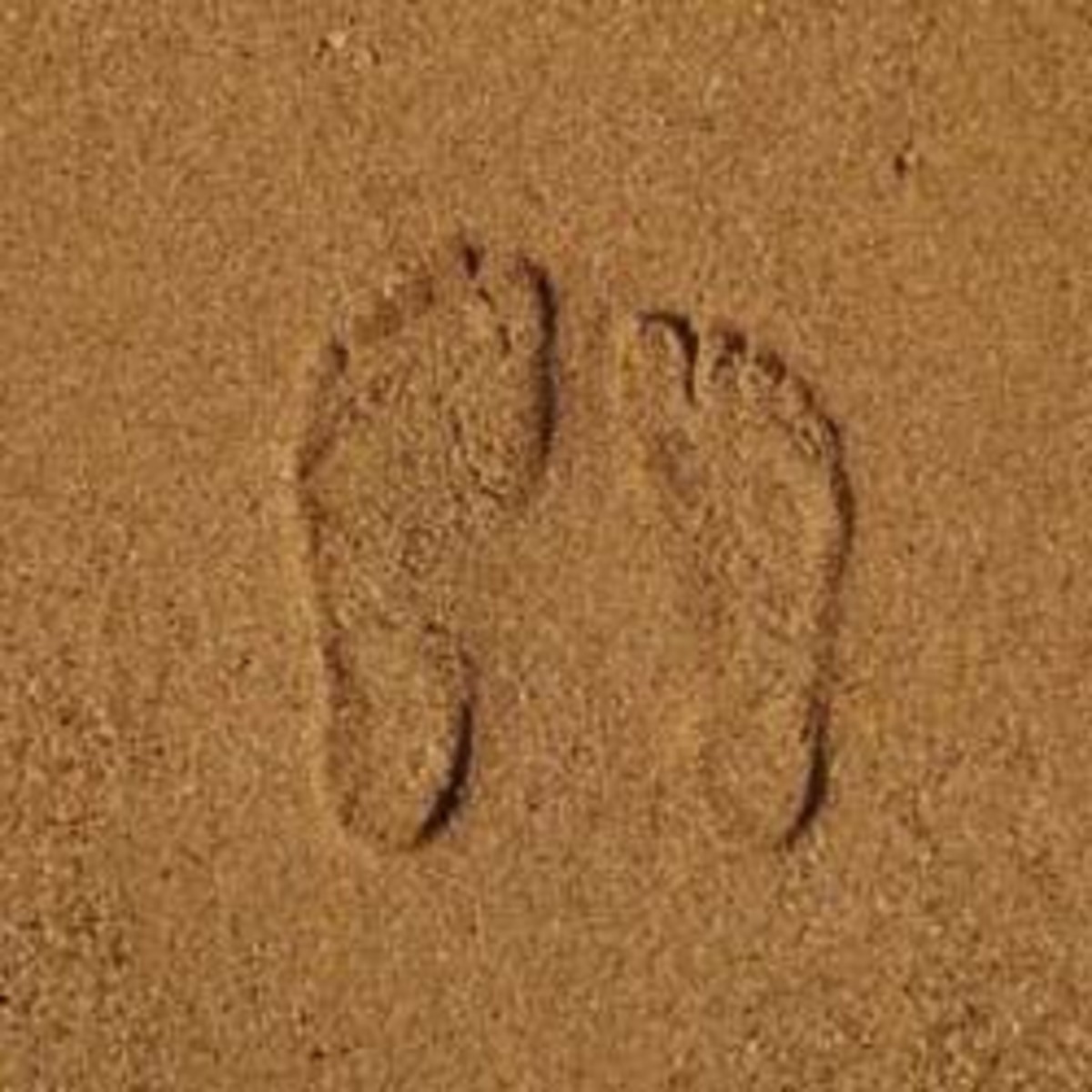Frozen Shoulder - Physiotherapy Treatment #4 - Mobilization Exercises Part 2
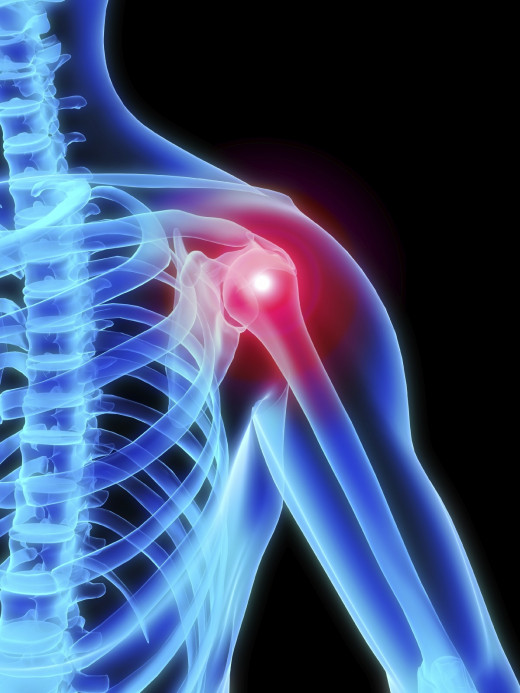
This article is in continuation to my article Frozen Shoulder - Physiotherapy Treatment #3 - Mobilization Exercises Part 1. So if you haven't already gone through it, please do so before proceeding.
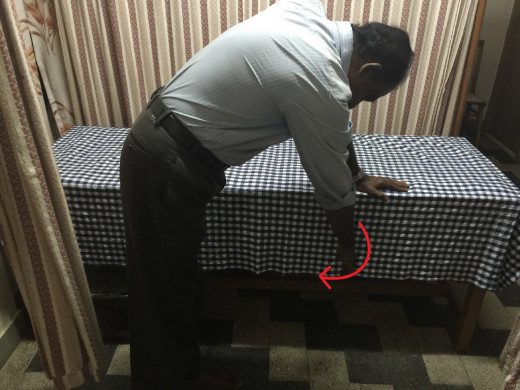
15. Pendulum Exercise
Starting Position- The patient stands near a table.
He bends forward till his trunk is almost parallel to the floor and supports himself on the edge of the table by his left upper limb.
Now his right upper limb is dangling down as a pendulum. He moves the right upper limb in circles in the clockwise direction and then in the anticlockwise direction. To start with small and gentle circular movements of small amplitude are done. May be gradually progressed to circular movements of larger amplitudes. Repeat the exercise 10 times, twice a day. In the same way patient can also do the exercise by swinging the dangling right upper limb in the forward and backward directions and also in the inward and outward directions.
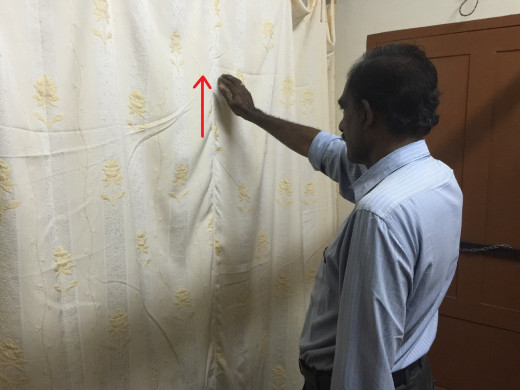
16. ‘Crawling-Up the Wall’ Exercise -1
Starting Position- The patient stands relaxed with both feet apart near a wall about a feet away from it and facing it. The upper limbs are dangling down.
Actively bring the right upper limb forward and keeps the fingers on the wall and try to climb up the wall with the fingers. Climb up the wall till a pain is felt on the shoulder joint. Now move the right upper limb further upwards till a maximum stretch is felt and an end point is reached. Hold the right upper limb in the maximum stretched position for 3-5 seconds. Care should be taken that it does not cause much pain or discomfort to the patient. Now slowly and gently bring back the right upper limb to the starting position. Repeat the exercise 10 times, twice a day.

17. ‘Crawling-Up the Wall’ Exercise – 2
Starting Position – The patient stands relaxed with both feet apart near a wall about a feet away from it with his right side facing the wall. The upper limbs are dangling down.
Actively bring the right upper limb sideways and keeps the fingers on the wall and try to climb up the wall with the fingers. Climb up the wall till a pain is felt on the shoulder joint. Now move the right upper limb further upwards till a maximum stretch is felt and an end point is reached. Hold the right upper limb in the maximum stretched position for 3-5 seconds. Care should be taken that it does not cause much pain or discomfort to the patient. Now slowly and gently bring back the right upper limb to the starting position. Repeat the exercise 10 times, twice a day.
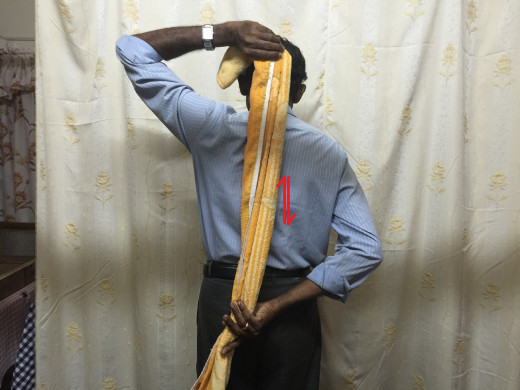
18. Towel Stretch Exercise.
Starting Position – The patient stands relaxed with both feet apart with the upper limbs dangling down.
Actively bring the right upper limb to the back of the body and one end of a towel is held in that hand. The other end of the towel is held by the left hand which is held behind the head. Now pull the towel upwards by the left hand so that the right upper limb also moves upwards. It is moved up till a pain is felt on the right shoulder. Now pull the towel further up till a maximum stretch is felt and an end point is reached. Hold the right upper limb in the maximum stretched position for 3-5 seconds. Care should be taken that it does not cause much pain or discomfort to the patient. Now slowly and gently bring back the right upper limb to the starting position. Repeat the exercise 10 times, twice a day.
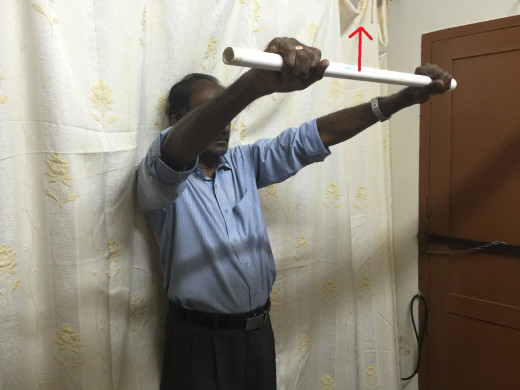
19. Exercise with a Stick- 1
Starting Position- Same as above.
The patient holds a stick in front with both hands, one hand on each end. He moves both the upper limbs forwards and upwards with the stick in the hands. The upward movement is carried on till a pain is felt on the right shoulder. Now lift the upper limbs upwards further till a maximum stretch is felt on the right shoulder and an end point is reached. Hold the upper limbs in the maximum stretched position with the stick in the hands for 3-5 seconds. Care should be taken that it does not cause much pain or discomfort to the patient. Now slowly and gently bring back the upper limbs to the starting position. Repeat the exercise 10 times, twice a day.
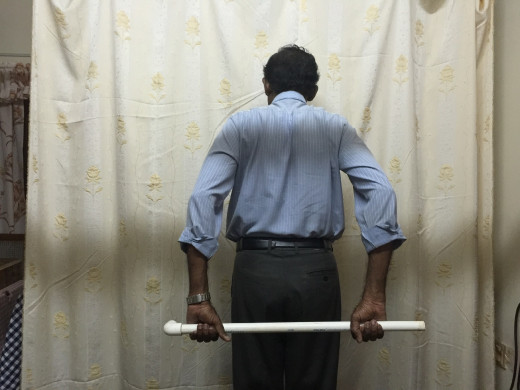
20. Exercise with a Stick - 2
Starting Position – Same as above.
The patient holds a stick behind with both the hands, one hand on each end. He moves both the upper limbs backwards with the stick in the hands. The backward movement is carried on till a pain is felt on the right shoulder. Now move the upper limbs backwards further till a maximum stretch is felt on the right shoulder and an end point is reached. Hold the upper limbs in the maximum stretched position with the stick in the hands for 3-5 seconds. Care should be taken that it does not cause much pain or discomfort to the patient. Now slowly and gently bring back the upper limbs to the starting position. Repeat the exercise 10 times, twice a day.
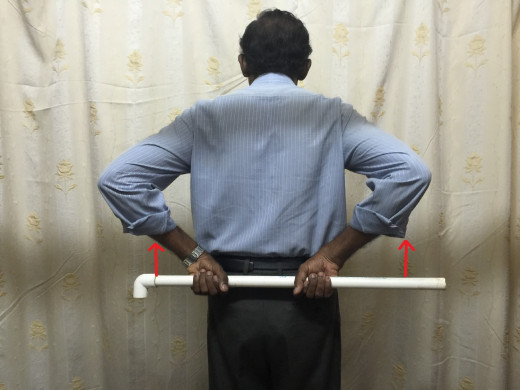
21. Exercise with a Stick - 3
Starting Position – Same as above.
The patient holds a stick behind with both the hands, one hand on each end. He bends both the upper limbs at the elbows and try to bring the stick upwards. This upward movement is carried on till a pain is felt on the right shoulder. Now move the upper limbs upwards further till a maximum stretch is felt on the right shoulder and an end point is reached. Hold the upper limbs in the maximum stretched position with the stick in the hands for 3-5 seconds. Care should be taken that it does not cause much pain or discomfort to the patient. Now slowly and gently bring back the upper limbs to the starting position. Repeat the exercise 10 times, twice a day.
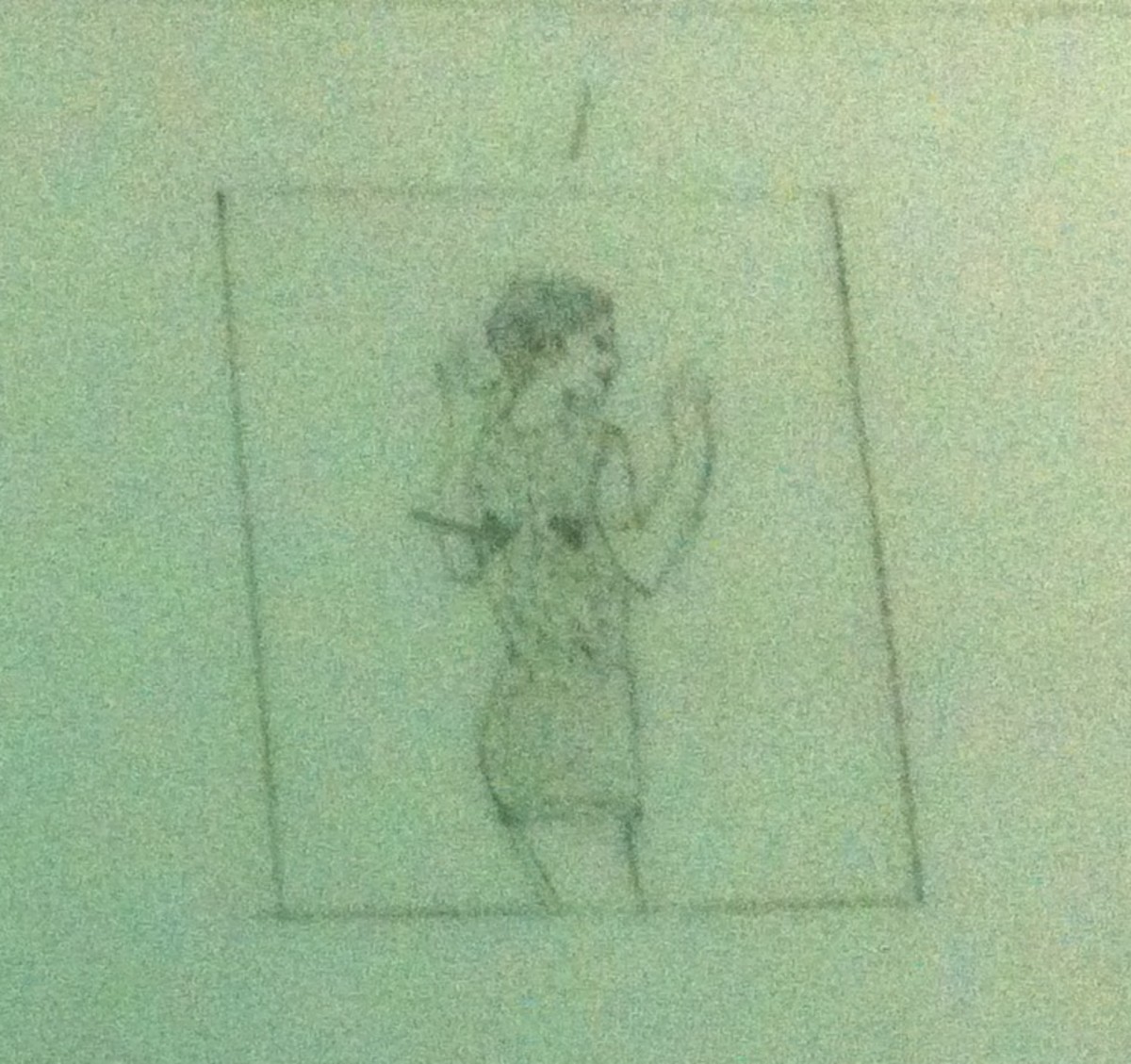
22. Scapular Exercise – 1
Starting Position –The patient stands relaxed with the feet apart with the upper limbs hanging down. Bend both the upper limbs at the elbows and hold them in the bend position with the hands facing forwards. Slowly and gradually pull back the upper limbs in such a way that both the shoulder blades are pulled back and touch each other at the back. This movement is continued till a stretch is felt. Hold in the maximum stretched position for 5 seconds. Now slowly and gently come back to the starting position. Repeat the exercise 10 times, twice a day.

23. Scapular Exercise – 2
Starting Position – Same as above.
Slowly and gently lift both the shoulders up as if to touch the ears with the respective shoulders. This movement is continued till a stretch is felt. Hold in the maximum stretched position for 5 seconds. Now slowly and gently come back to the starting position. Repeat the exercise 10 times, twice a day.

24. Scapular Exercise – 3
Starting Position- Same as above.
Bend both the upper limbs at the elbows and keep the finger tips at the respective shoulders as shown in the figure. Now rotate the shoulders in the clockwise and in the anticlockwise directions. Repeat the exercise 10 times, twice a day.
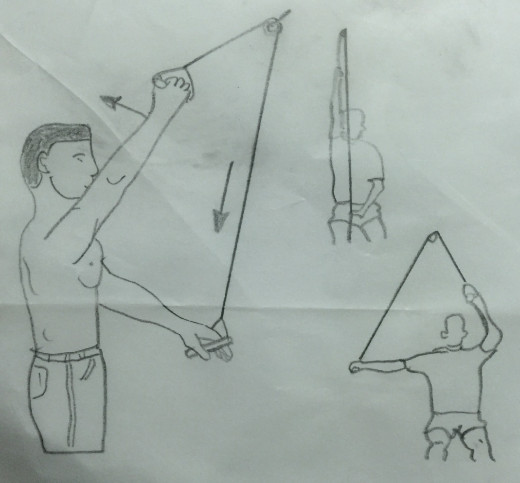
25. Pulley Exercise
An overhead pulley is arranged so that one upper limb helps the other. For the pulley exercises to be effective the advice of a physiotherapist may be sought. The physiotherapist must have a clear therapeutic aim as to the result he intends to obtain. He must also see to it that the pulley exercises are carried out in the right and proper way. The choice of the starting position is very important. It is very essential that the height and position of the pulley, the tension and length of the rope etc must be chosen very accurately because these factors vary from patient to patient. All these factors, if not chosen properly, will result in wrong movements and may lead to wrong treatment. Usually the movements are double sided and they are carried out in alternate directions by the upper limbs. The best primary position for the upper limb is – the sound upper limb is in full stretch whereas the injured (frozen shoulder) upper limb is in bend position. When the movement takes place, the position of the upper limbs are reversed and a powerful stretch is obtained in the frozen shoulder of injured upper limb.
If forward movement is aimed at, it is best to hang the pulley from an overhead bar away from the wall and the patient is placed directly under it. If backward movement is aimed at, the pulley must be hung behind and above the patient.

